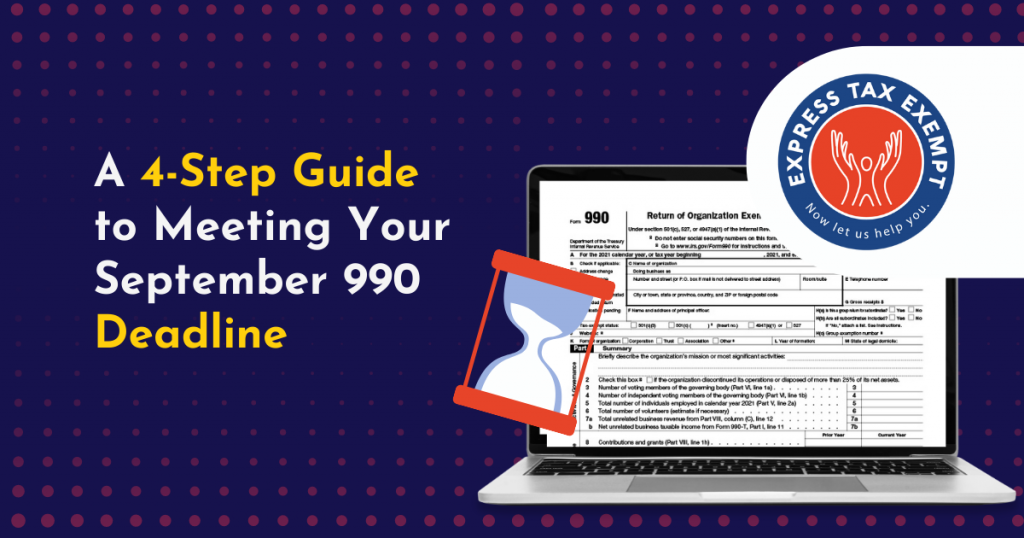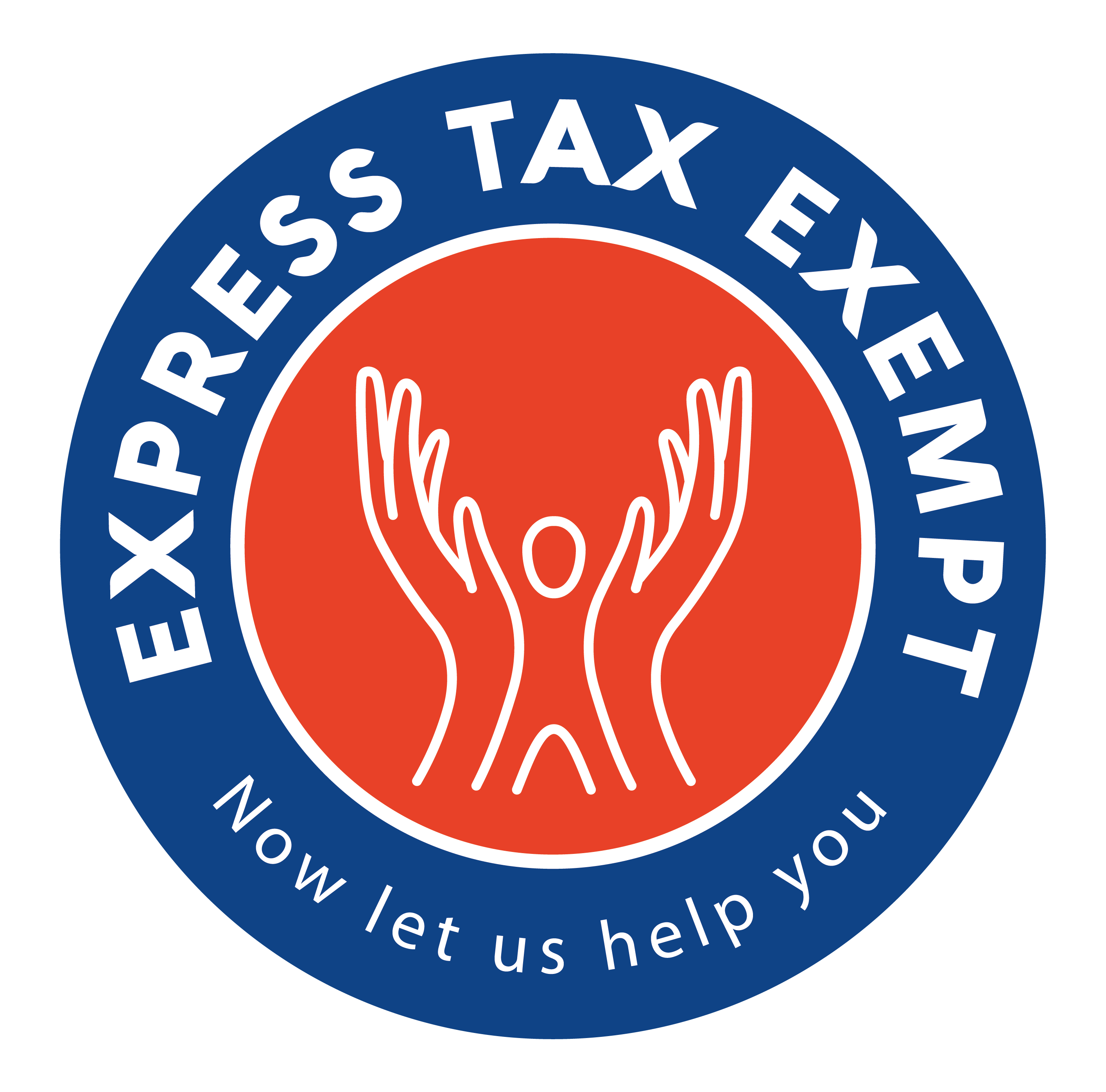A 4-Step Guide to Meeting Your September 990 Deadline

It is the start of a new month and for some nonprofit organizations, this means an upcoming tax return deadline. If this applies to your organization, keep reading because this advice is for you!
We know that this is a busy time of year for you, the summer is ending and fall is beginning. This probably means a shift in your volunteer schedule, a shift in your organization’s programming, and even a shift in the weather. Wow! That is a lot to handle in addition to a deadline.
When it comes down to it filing your organization’s annual tax return with the IRS is a crucial piece of your tax-exempt puzzle. Failure to do so can lead to big consequences such as penalties and worst of all putting your 501(c)(3) status in jeopardy.
1. Confirm Your 990 Deadline
How does a 501(c)(3) know if their deadline falls in September? Here is the general rule that the IRS uses.
The annual tax return is due to the IRS on the 15th day of the 5th month following the close of the organization’s tax year.
Using this rule, if your organization’s tax year begins on May 1st and ends on April 30th, the deadline to file with the IRS is generally September 15th.
The main exception to this would be if you filed an extension for your Form 990 deadline back in March of this year. That would mean that your extension runs out this month. Don’t worry, we’ll cover extensions for tax-exempt returns later in this blog!
2. Once you have the Information, Start Filing!
Why prolong the inevitable nonprofit tax filing until July when you can file now? File now before the pressure of meeting your deadline becomes more intense. Plus the more time you have to file, the more care you can take during the filing process.
When you file with ExpressTaxExempt, you are able to share your Form 990 with board members and other key officials before IRS transmission. If you complete your 990 Form now, they will have plenty of time to review it and provide you with any corrections. Peace of mind beats procrastination every time!
3. Be Realistic about your Time-Frame to File
While you may be able to meet your upcoming deadline on September 15th easily, it is important to be proactive if you realize otherwise. There is an option for organizations that need more time to file and it is a MUCH better option than filing late.
Your organization can file an extension Form 8868 with the IRS to request up to 6 additional months to file your annual tax return. There is no downside to filing an extension if you know you can’t meet your original deadline, in fact, this is an automatic extension.
The IRS doesn’t require a reason for the request, as long as Form 8868 is completed correctly and by the original 990 deadline, it will be granted.
Please note that the extension applies to all 990 forms, except Form 990-N. This is also called the 990 e-postcard.
4. Choose an E-file Provider that you can Trust!
E-filing is the only method for filing the 990 Series forms with the IRS now that it is mandated. This means that filing a paper form and mailing it to the IRS is no longer an option. While this has been an adjustment for some organizations, this is a positive change.
Forms that are e-filed have fewer common mistakes than forms filled out on paper. The IRS is also able to file these forms at a much faster rate. When you e-file you are able to find out the status of your Form 990, whereas the IRS doesn’t provide a status for paper forms.
ExpressTaxExempt is the market-leading e-file provider for the 990 Form Series. Our team offers excellent live customer support to help our clients through the filing process.
We also offer a ton of unique features to simplify the process of completing your forms. Need a solution for your board members to easily review and approve your organization’s 990 before it’s submitted, we’ve got you covered!
Create your free ExpressTaxExempt account today to get started and beat your September 15th deadline!





